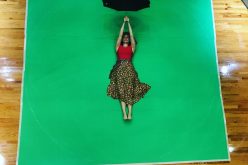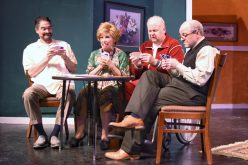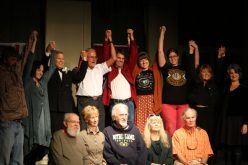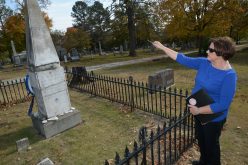When the Tracy Letts’ comic drama “August: Osage County” debuted on Broadway in 2007, The New York Times called it a “fiercely funny and bitingly sad” production that was “the most exciting new American play Broadway has seen in years.” Bob Stevenson, University of Arkansas at Fort Smith director of theater, saw that very production — which won multiple Tony Awards, including Best Play — and agrees wholeheartedly with that assessment.
“It hearkens back to a more classical era in American playwriting,” he notes. “It very much feels like an Arthur Miller or Tennessee Williams show, only modernized for post-2002 America. It’s the same storytelling of America through the family and family connections and the successes and failures of that family that mid-century playwrights were so good at doing. The roles that Tracy Letts has written are so individualistic and aggressive and are so dynamic — you can’t help but get excited about watching the production. I thought, ‘What a great experience for our actors — this is such a gift for actors.’”
Letts’ play — the theatrical equivalent of seeing two speeding trains approaching each other on the same track and not being able to tear your eyes away, even though you know what’s about to happen — tells the story of matriarch Violet Weston, whose family gathers when news breaks that her husband has left her. No one in the family is doing particularly well in their own lives, and they do considerably worse when brought closer into Weston’s orbit. Letts’ script is a master class in family dysfunction. Still, the biting wit of the playwright means the audience will laugh as much as they will cringe.
“It’s pretty obvious that there’s only one way to play these characters — all the way to the wall,” says Stevenson. “If you back off at all, the play stops working. So we’ve had a lot of fun to see how far we can push it.”
In a play chock full of strong characters, the women in Letts’ script are really allowed to shine.
“The first show of the year was a little more male-centric, and this is a little more female-centric — it has a lot of really good women’s roles,” says Stevenson. “The two protagonists are female, and the script leans very heavily on their relationship. [After I saw it on Broadway], I thought, ‘I need to find a time when we have some great people [to stage this play],’ and I felt like this year was a good year to do it. Our mantra this year has been ‘acting focused and design simple’ — once you build this set, you’re pretty much done, and that lets us focus on the acting instead of the design elements.”
The play is set in Pawhuska, a small Oklahoma town right outside of Tulsa — and not too far away from Fort Smith.
“This play is set less than a hundred miles away,” says Stevenson. “While we may not be as plains-y as the characters in the play, the people aren’t that much different. During rehearsal, we keep hearing stories about how the characters are so much like the actors’ parents or grandparents. I think our audience is going to walk away thinking, ‘I know these people.’ It will feel very close to home.”
Ultimately, says Stevenson, he’s excited at the prospect of sharing the show with the community.
“I feel like we have several theater companies in the area who do a good job of putting on very crowd-pleasing, known historical pieces,” he says. “I think one of our jobs here [at UAFS] is to push the envelope of new, modern, original [works] — and this is our chance to push something relatively new. People may have seen the movie version, but the stage version is completely different [in] having those strong emotions in the same room with you.”
LARA JO HIGHTOWER
lhightower@nwadg.com
__
FAQ
‘August: Osage County’
WHEN — 7:30 p.m. Feb. 20-22
WHERE — UAFS Breedlove Auditorium, 5210 Grand Ave., Fort Smith
COST — $6
INFO — 788-7300
FYI — Bob Stevenson says that UAFS is recommending this show for patrons ages 16 and older, due to its intense plot and adult language. The show runs approximately three hours and has two intermissions.










